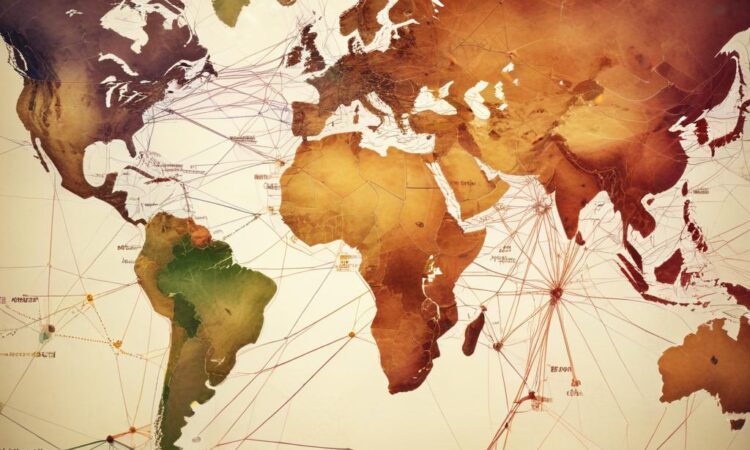Inflationary Pressures and Interest Rate Hikes
Central banks worldwide continue to grapple with persistent inflation, leading to further interest rate hikes. This multifaceted challenge presents a complex interplay of economic factors, impacting global markets, investment strategies, and the cost of borrowing for businesses and consumers. The ripple effects are far-reaching, influencing everything from household budgets to corporate expansion plans.
The persistent inflationary pressures are fueled by a variety of factors, including supply chain disruptions, geopolitical instability, and strong consumer demand in certain sectors. These intertwined issues create a challenging environment for policymakers, who are tasked with balancing the need to curb inflation without triggering a sharp economic slowdown or a recession. The delicate act of navigating this tightrope walk is a defining feature of the current global economic landscape.
The response from central banks has been largely uniform: interest rate hikes. By increasing the cost of borrowing, central banks aim to cool down economic activity and reduce inflationary pressures. This strategy, while seemingly straightforward, carries significant risks. Higher interest rates make it more expensive for businesses to invest, potentially hindering economic growth and leading to job losses. For consumers, higher interest rates translate to increased borrowing costs for mortgages, auto loans, and credit card debt, putting a strain on household budgets and reducing disposable income.
The impact on global markets is substantial. Higher interest rates tend to strengthen the currency of the country implementing the hikes, potentially impacting international trade and competitiveness. Investors are closely monitoring central bank actions, adjusting their portfolios to reflect the changing risk environment. Volatility in the stock market is a common consequence of interest rate adjustments, as investors grapple with uncertainty about future economic performance and corporate profitability.
Investment strategies are being reshaped in response to the inflationary environment and rising interest rates. Traditional investment approaches that relied on low interest rates and consistent economic growth are being reassessed. Investors are increasingly focused on diversification, seeking assets that can withstand inflationary pressures and provide a hedge against economic uncertainty. The search for yield in a higher-interest-rate environment is driving demand for fixed-income instruments, while equity investments require a more careful evaluation of risk and potential returns.
Businesses are also adapting to the changing economic climate. The increased cost of borrowing is forcing many companies to reassess their capital expenditure plans, delaying or scaling back expansion projects. Companies are also facing increased pressure to manage their costs and improve efficiency to maintain profitability in a more challenging economic environment. The ability to adapt to higher interest rates and changing consumer behavior will be a key determinant of success in the coming years.
Concerns over a potential recession are growing as interest rate hikes continue. While central banks aim to achieve a “soft landing”—slowing economic growth without triggering a recession—the risk of a more significant downturn is acknowledged by many economists and analysts. The lagging effect of monetary policy, the unpredictable nature of global events, and the potential for further supply chain disruptions all contribute to the uncertainty surrounding the economic outlook.
Investor sentiment is clearly influenced by these recessionary concerns. Risk aversion is increasing, leading to cautious investment strategies and a preference for safer assets. Corporate planning is also being affected, with many companies preparing for the possibility of reduced demand and a slowdown in economic activity. Contingency plans are being developed to mitigate the potential impact of a recession, including measures to reduce costs, streamline operations, and preserve liquidity.
The current economic climate demands a nuanced understanding of the interplay between inflation, interest rates, and economic growth. Central banks are walking a tightrope, attempting to control inflation without triggering a recession. Businesses and consumers must adapt to a new reality of higher borrowing costs and greater economic uncertainty. Investors need to adopt strategies that can navigate the volatility of the markets and protect their investments. The coming months and years will be critical in determining the trajectory of the global economy and the long-term consequences of the current inflationary pressures and interest rate hikes.
The interconnectedness of global markets means that the challenges faced in one region can quickly spread to others. This highlights the need for international cooperation and coordinated policy responses to address the shared challenges of inflation and economic instability. The effectiveness of current policies will be subject to ongoing evaluation and adjustments as new economic data emerges and the global economic landscape continues to evolve.
In conclusion, the current economic environment characterized by persistent inflation and rising interest rates presents significant challenges for central banks, businesses, consumers, and investors alike. Navigating this complex landscape requires careful consideration of the risks and opportunities presented by the changing economic conditions. The ability to adapt and respond effectively to evolving circumstances will be crucial in determining success in the years to come.
The intricate relationship between monetary policy, fiscal policy, and global economic events will continue to shape the economic outlook. Continuous monitoring of economic indicators and a deep understanding of the factors driving inflation are essential for effective decision-making in this dynamic environment. The resilience of global economies and the ability of policymakers to effectively address these challenges will ultimately determine the long-term trajectory of the world economy.

